Building of the Day: 718 Bushwick Avenue
Brooklyn, one building at a time. Name: Wood-framed row house Address: 718 Bushwick Avenue Cross Streets: Corner of Hart Street Neighborhood: Bushwick Year Built: 1888-89 Architectural Style: Italianate with Queen Anne elements Architect: Unknown Landmarked: No, but part of a proposed Bushwick HD The story: Many of the streets of Bushwick and Williamsburg were named…
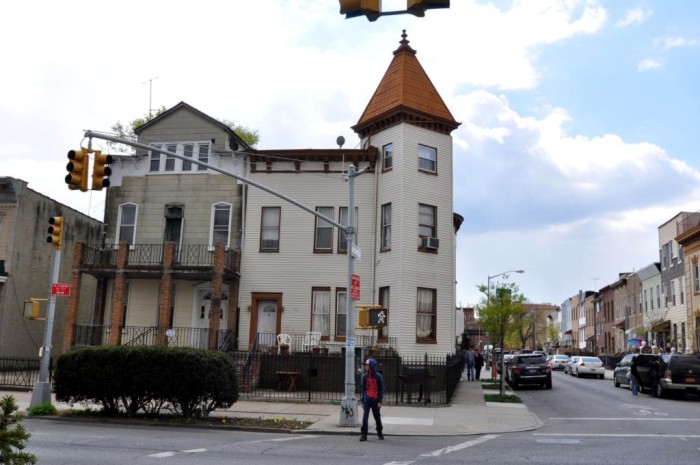

Brooklyn, one building at a time.
Name: Wood-framed row house
Address: 718 Bushwick Avenue
Cross Streets: Corner of Hart Street
Neighborhood: Bushwick
Year Built: 1888-89
Architectural Style: Italianate with Queen Anne elements
Architect: Unknown
Landmarked: No, but part of a proposed Bushwick HD
The story: Many of the streets of Bushwick and Williamsburg were named after signers of the Declaration of Independence. Hart Street is one of these, named for a farmer from New Jersey named John Hart, who was also one of the delegates to the Continental Congress. Hart Street intersects with Bushwick Avenue only three blocks from the area called Freedom Triangle, where Myrtle, Bushwick and Willoughby Avenues meet.
A majority of the houses here were designed by Theobaldt Engelhardt, and although there are no records available, it would not be inconceivable that he designed these houses as well. This corner house was probably built with the one next door, at 220 Bushwick. Both houses have been muddled with so much, it’s hard to tell, but they do share the same cornice level, foundation height and general fenestration.
718 Bushwick is basically an Italianate frame house on steroids. It would be interesting to see if the house was built like this originally, or if the tower, the bump-out bay on the side, and the rear extension were added on later. Since the entire house has been re-sided and painted, and most of the detail removed, it’s hard to tell, although the cornice brackets are all the same. If the house was added onto, it was done soon after it was built. Unfortunately, online records are scarce here. It is rather amazing that the tall tower roof and finial survived. Many times, these are the largest details to go.
This corner of Bushwick was a bit of a doctor’s row. Doctors practiced out of the brick houses built in the early 1900s, just up the block, as well as on the opposite corner of Hart, across the street. This house was home to a Dr. Henry Franciscus in the 1920s. In 1918, he was involved in a collision between his car and a trolley car in Ridgewood. He fractured some ribs. The doctor recovered well and was in the news again in 1925, at this same address. He was called to the bedside of a patient who had suffered a heart attack, and later died. GMAP
(Photo: Christopher Bride for PropertyShark)
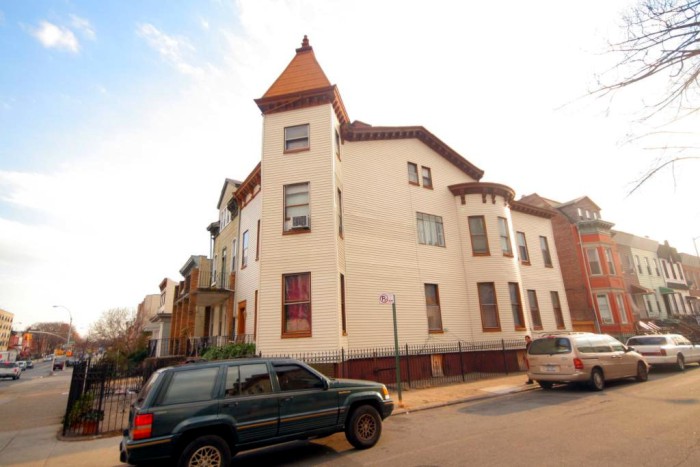
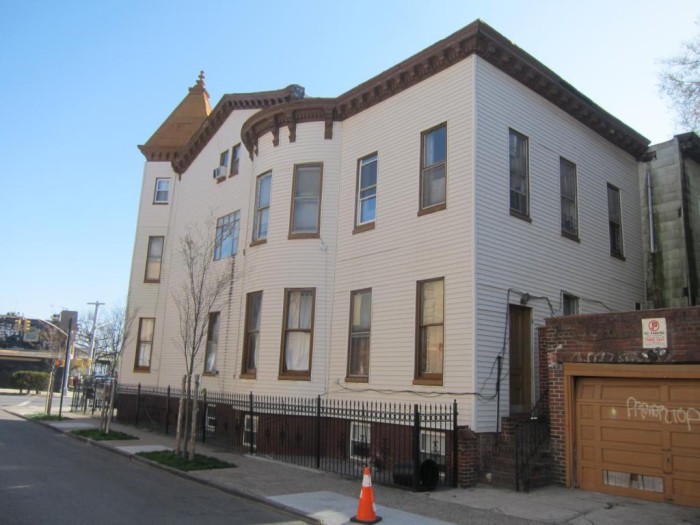

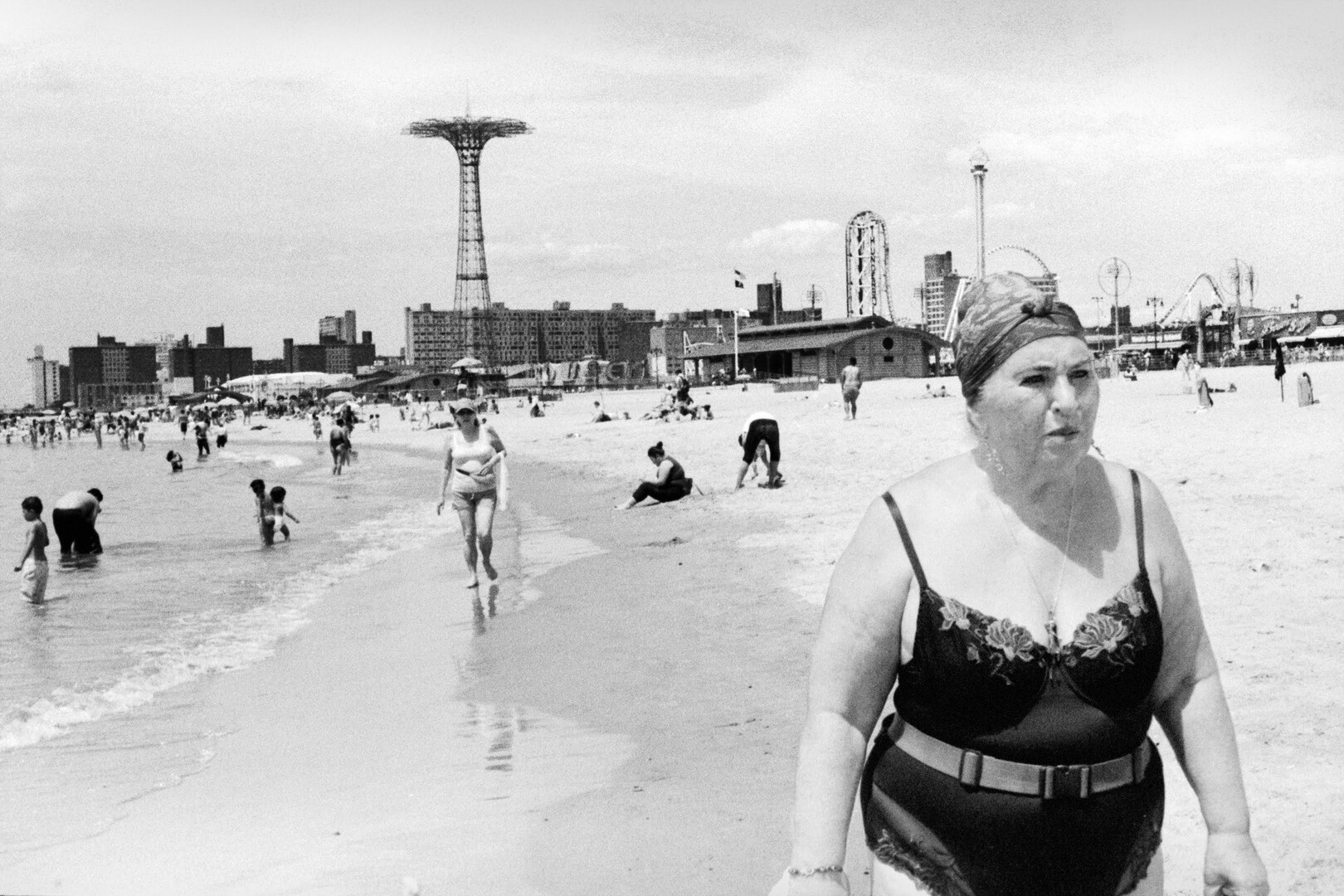
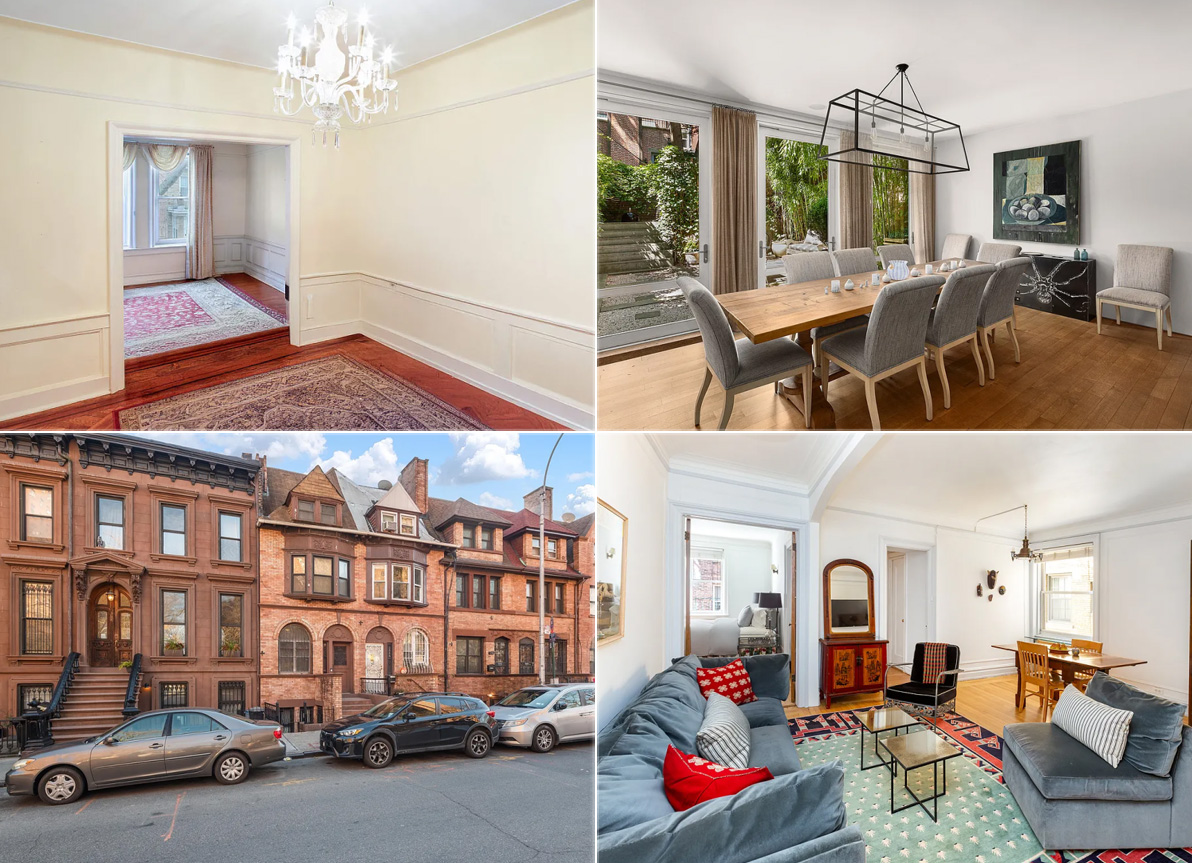
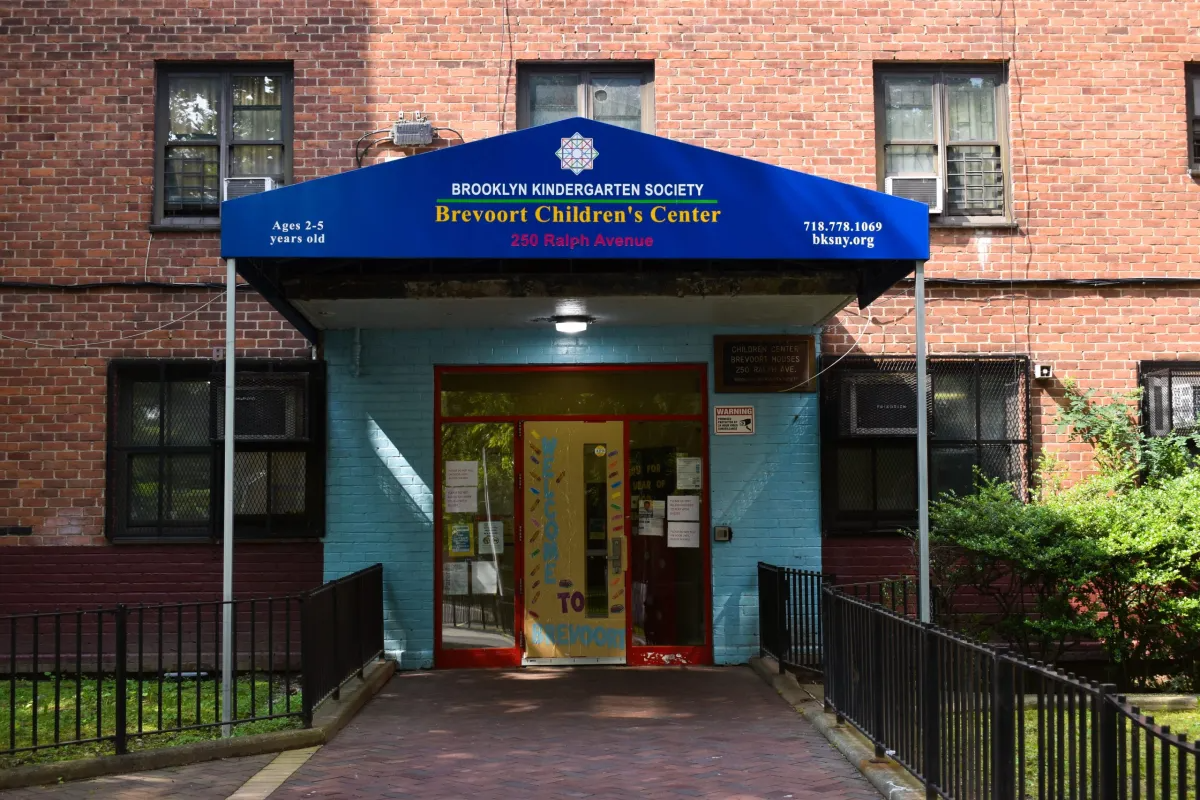
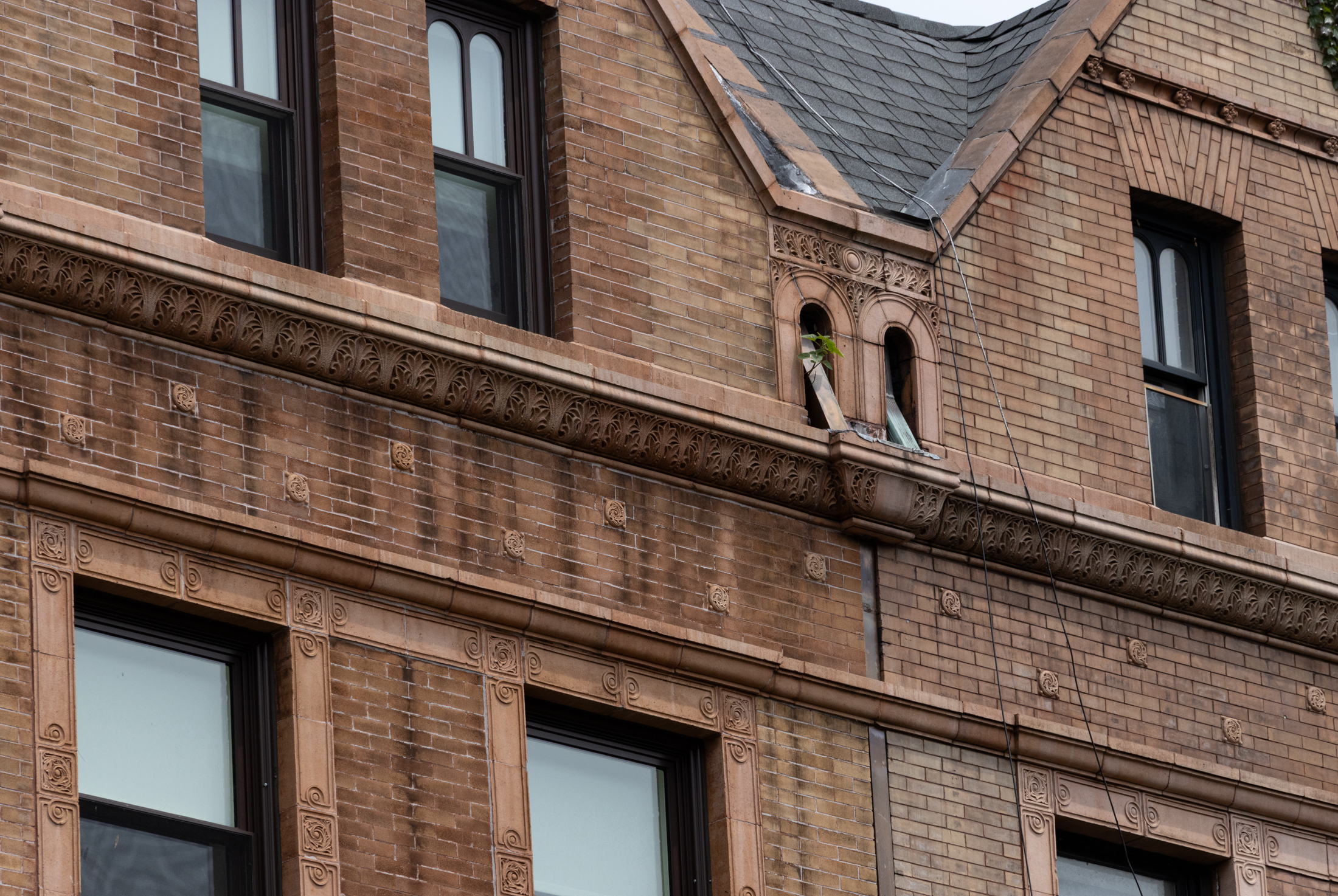
Fine article as always – and one can only hope that the Bushwick Ave. HD proposal advances before more damage is done to this once great street.
While a number of Bushwick and Williamsburg streets are named for the signers of the Declaration of Independence, the naming of these streets was actually instituted by the City of Brooklyn shortly before Williamsburg and Bushwick were consolidated into it in 1855. The affected streets were mostly situated in parts of Brooklyn that were just beginning to be developed. This included northern Bed-Stuy and a community once known as North Brooklyn, which is now the portion of Williamsburg situated south of Division Ave. and Broadway. (There are also a few “signers” street situated in Red Hook and, I think, Brownsville as well.)
After consolidation, the names of a number of these streets were over time extended into what had formerly been Bushwick and Williamsburg; Hart St., which initially only extended west of Broadway, is only one example of this. Several other such situations occurred in 1889, when the numbered streets of Williamsburg’s North and Southsides were transformed into “named” streets. At that time – and only then – Wythe Ave. and Hooper, Rodney and Hewes Sts. were extended north of either Division or Broadway.
In one situation – when Gwinnett St. was replaced by Lorimer St. south of Broadway – the re-naming went in the opposite direction.
Hope you find this interesting.
The NYC 80’s tax photo shows it as White second floor and Brown ground floor with a green shingled roof and original iron fence. Here a link to a screen grab:
[IMG]http://i57.tinypic.com/n8l91.jpg[/IMG]